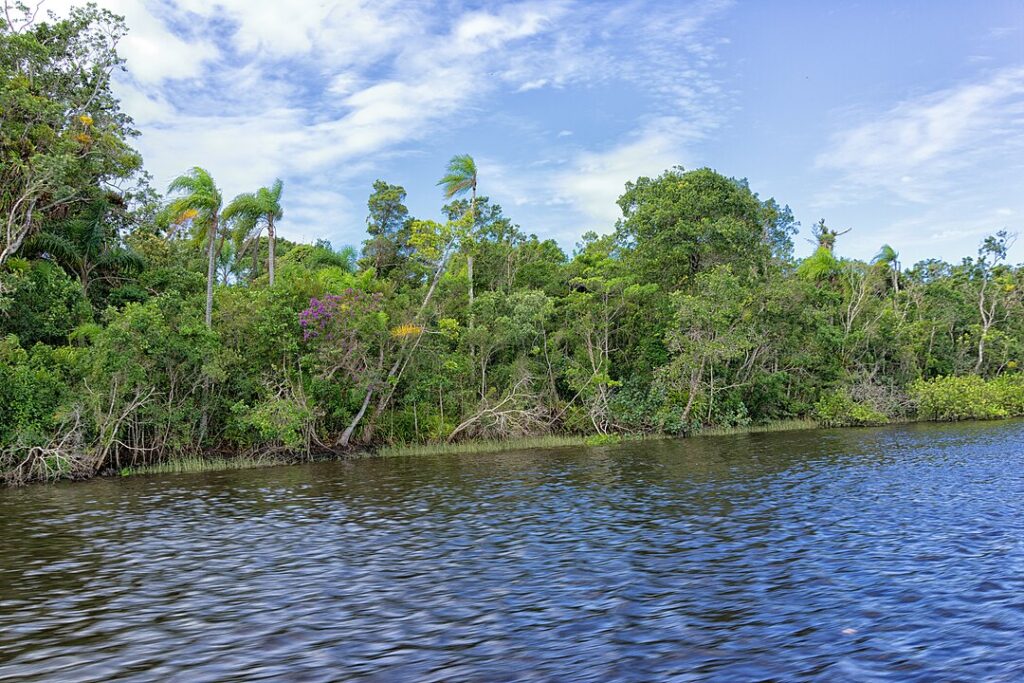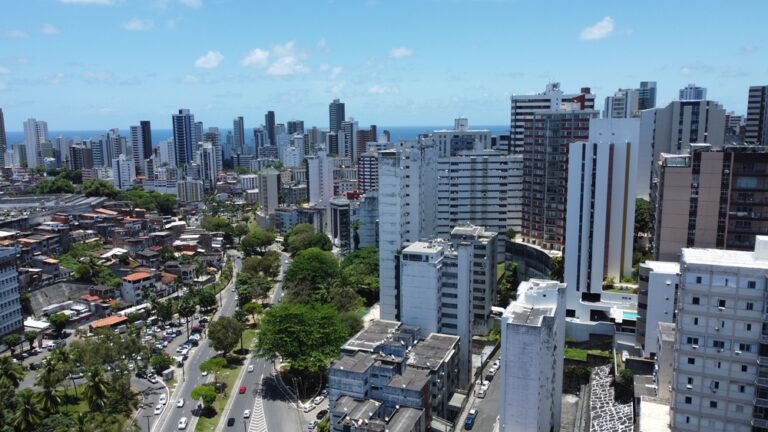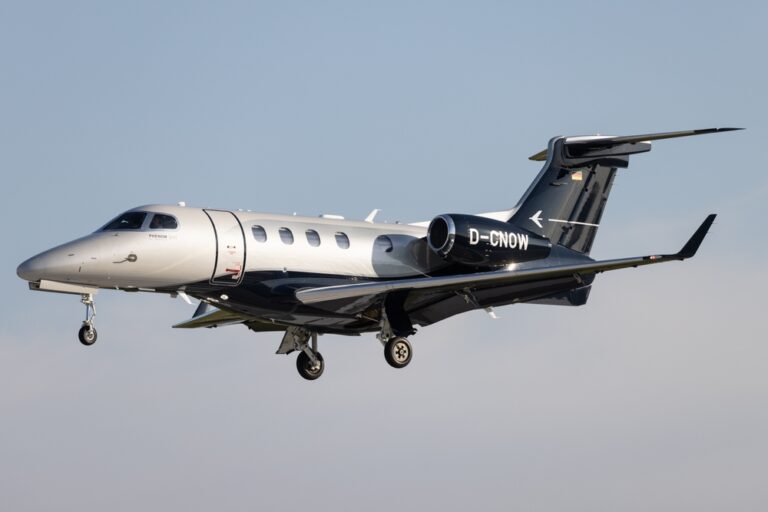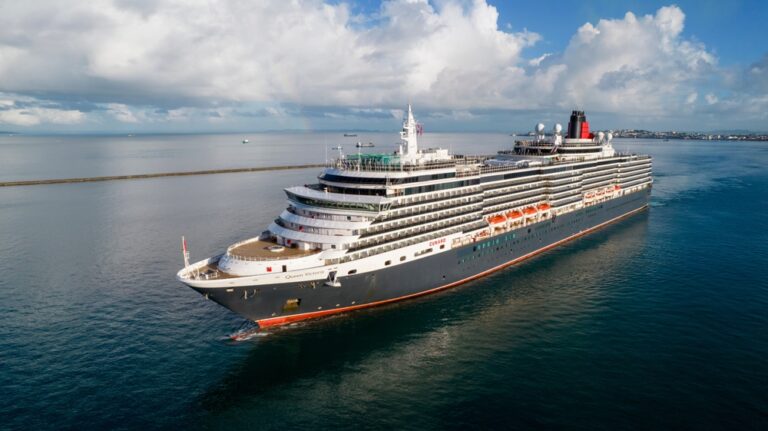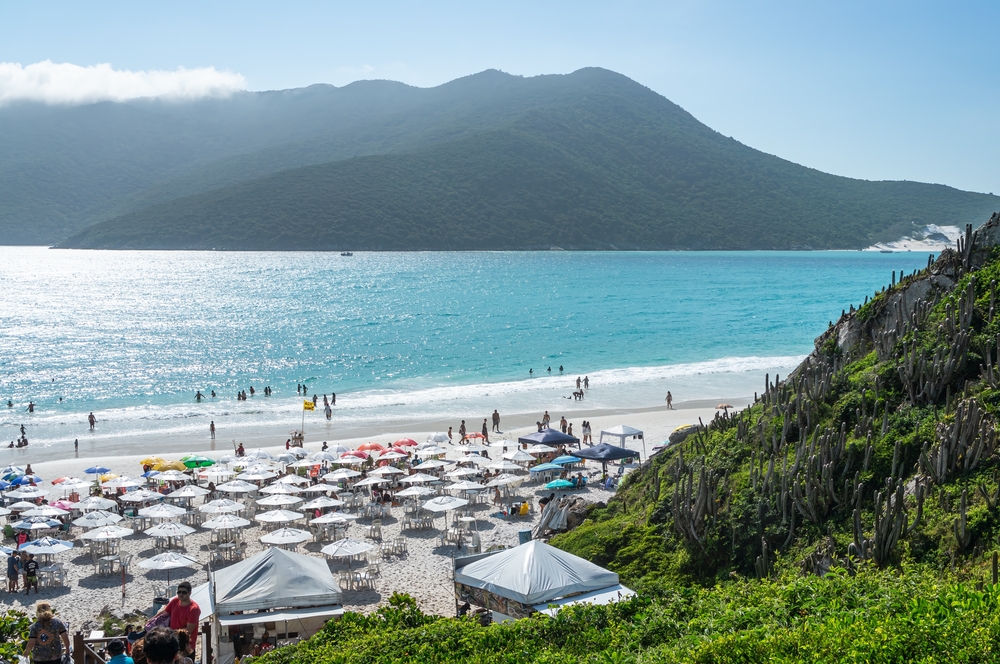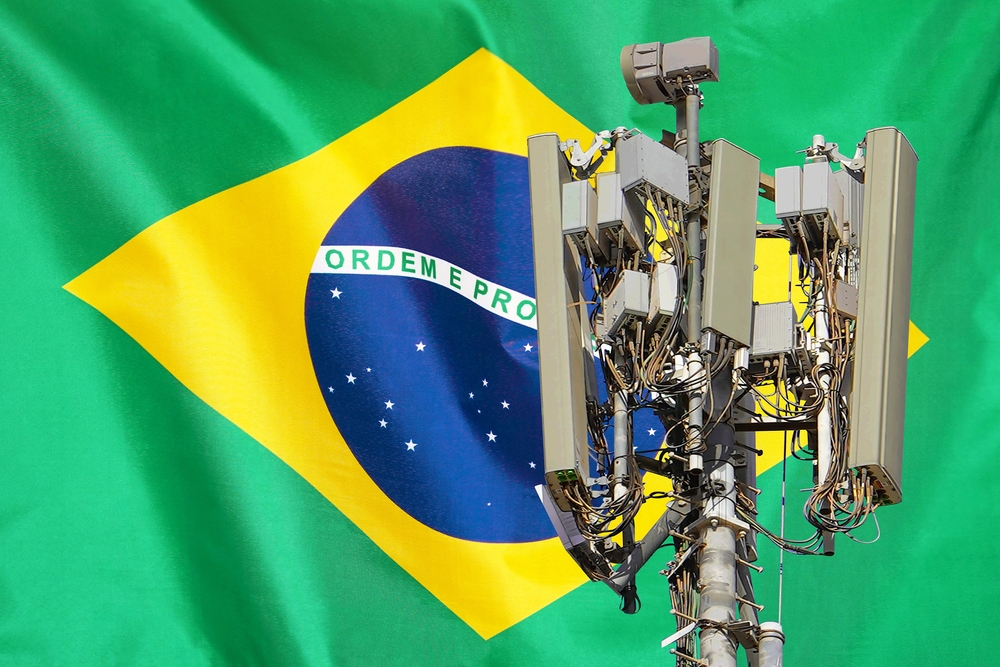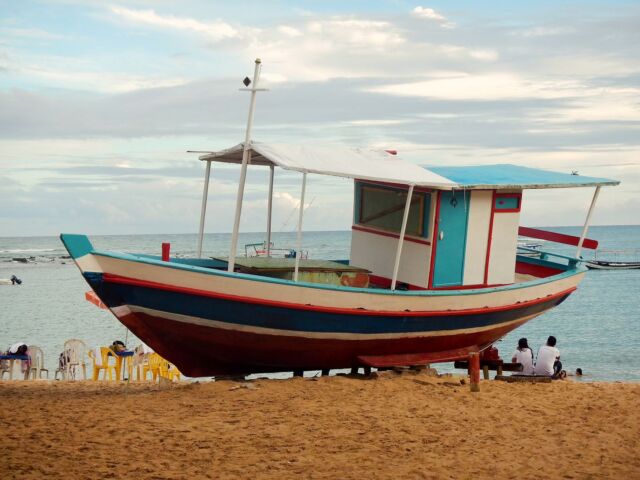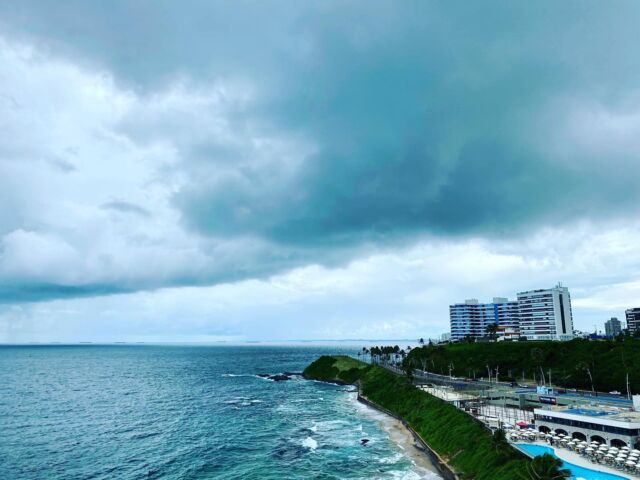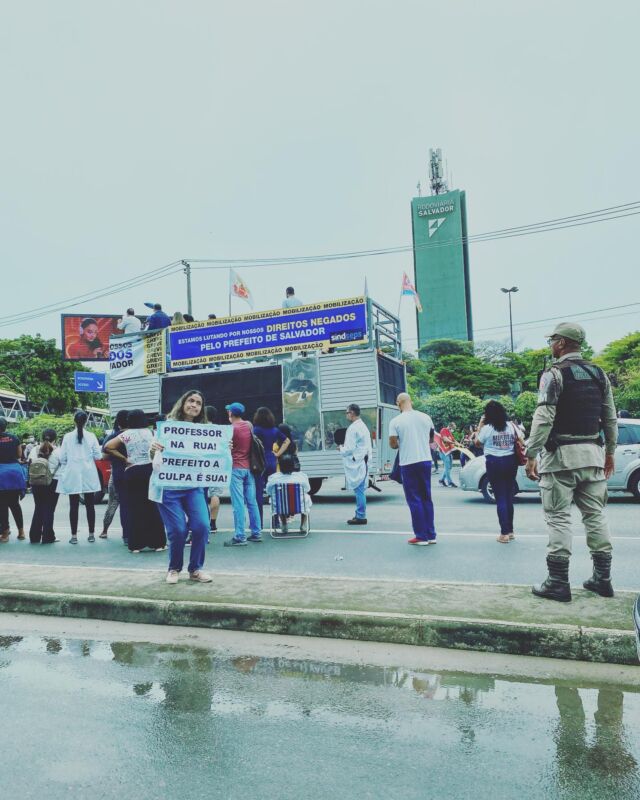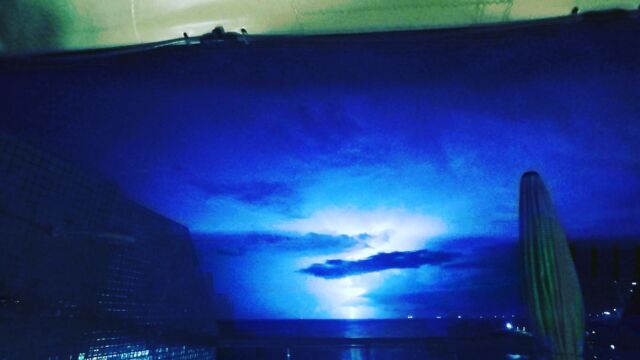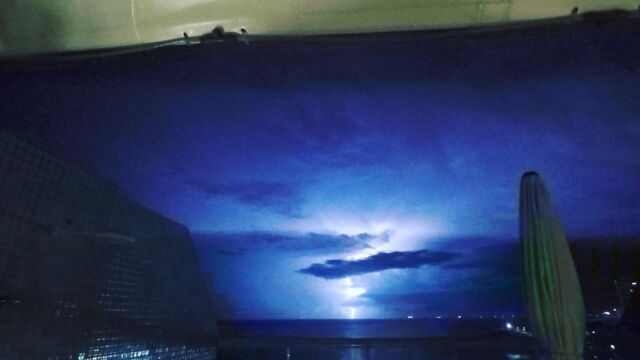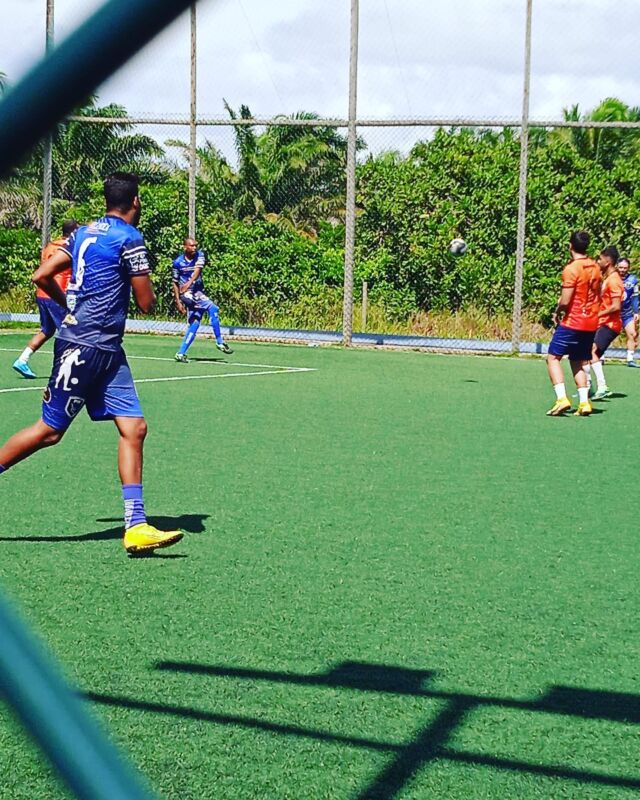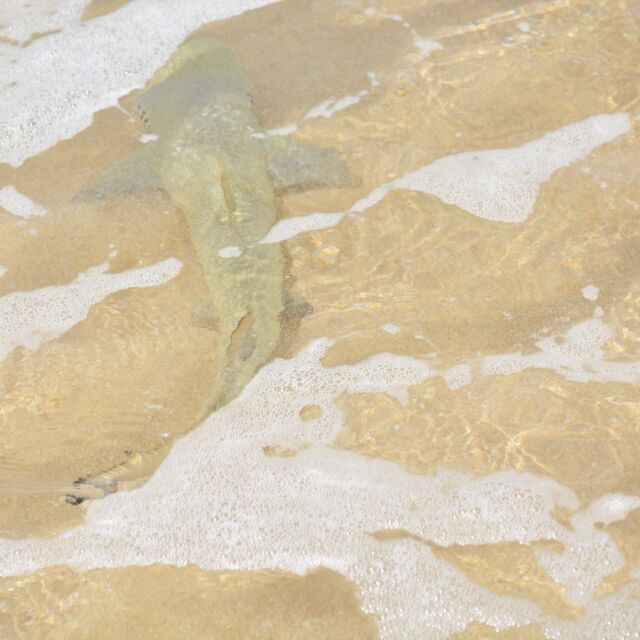Table of Content
ToggleIntroduction
The Varadouro Canal is a hidden gem in Brazil’s southern region. This 70-year-old waterway connects the states of São Paulo and Paraná, offering a unique blend of natural beauty and historical significance. The canal separates the island of Superagüi from the mainland, creating a distinct geographical feature that has shaped the area’s ecology and culture.
Located in Paraná state, the Varadouro Canal is surrounded by lush vegetation and diverse wildlife. It serves as a vital link for local communities and has recently caught the attention of tourism developers. The governments of São Paulo and Paraná are working together to revitalize this historic waterway, aiming to boost eco-tourism and preserve its natural wonders.
The canal’s rich history and untouched landscapes make it an ideal destination for adventurers and nature enthusiasts. Visitors can explore the area by boat, witnessing firsthand the stunning scenery and local culture that have remained relatively unchanged for decades. As interest in the Varadouro Canal grows, it promises to become a key attraction in Brazil’s expanding nautical tourism sector.
Key Takeaways
- The Varadouro Canal is a 70-year-old waterway connecting São Paulo and Paraná states in Brazil.
- It separates Superagüi Island from the mainland and is surrounded by rich biodiversity.
- The canal is being revitalized to promote eco-tourism and preserve its natural and cultural heritage.
Geography and Location
The Varadouro Canal is a unique waterway in southern Brazil. It links two coastal states and has distinct physical features that shape its environment.
Coordinates and Map Position
The Varadouro Canal is located in Brazil, spanning the border between the states of São Paulo and Paraná. Its coordinates are approximately 25° 13′ 41″ south latitude and 48° 1′ 39″ west longitude.
The canal connects the bay of Paranaguá in Paraná to the town of Cananeia in São Paulo. This artificial waterway is about 6 kilometers long.
It serves as a vital link between two important coastal regions. The canal’s position allows for easier navigation between these areas, bypassing a previously challenging land route.
Topographical Features
The Varadouro Canal cuts through a narrow strip of coastal land. This area is known for its diverse landscapes, including mangrove swamps and Atlantic rainforest.
The canal’s surroundings are mostly flat, typical of Brazil’s coastal plains. However, the nearby Serra do Mar mountain range creates a dramatic backdrop to the east.
Water levels in the canal can vary due to tides and rainfall. This impacts navigation and the surrounding ecosystem.
The canal’s banks are lined with dense vegetation. This helps prevent erosion and provides habitat for local wildlife.
Historical Background
The Varadouro Canal has a rich history dating back to the early 19th century. Its creation shaped local trade and travel in Brazil’s southern coastal region.
Construction and Development
The Varadouro Canal’s construction began in 1820. Local residents started the project to connect the communities of Paranaguá and Cananéia.
Fishermen needed a way to transport their boats across land. This led to the canal’s name “varadouro,” which means portage.
The artificial waterway separated Superagüi Island from the mainland. This changed the geography of Paraná state.
Significant Events
The canal played a key role in regional development. It improved transportation between São Paulo and Paraná states.
Today, the Varadouro Canal is part of a joint tourism venture. São Paulo and Paraná are working together to showcase the area’s natural beauty and history.
The project aims to boost sustainable tourism. It highlights the canal’s importance in connecting coastal communities.
In recent years, the canal has attracted international attention. Some claim it may be the first time foreign sailors have navigated the waterway.
Economic Significance
The Varadouro Canal plays a vital role in Brazil’s economy. It connects key coastal regions and facilitates industrial activities and trade. The waterway’s impact extends to multiple sectors.
Industrial Usage
The canal supports various industries along its route. Fishing boats use the waterway to access prime fishing grounds. This boosts local seafood production and exports.
Many factories also rely on the canal for water supply and waste disposal. These include food processing plants and small-scale manufacturers.
Tourism is another growing sector. Tour operators offer boat trips through the canal. This creates jobs and brings in visitor spending to nearby towns.
Trade and Transportation
The Varadouro Canal links the ports of Paranaguá and Cananeia. This connection is crucial for moving goods between São Paulo and Paraná states.
Barges transport agricultural products like coffee, sugar, and soybeans. The canal offers a cheaper alternative to road transport for bulk goods.
Passenger ferries also use the waterway. This improves mobility for coastal communities. It helps workers commute and supports regional integration.
The canal’s reopening is expected to boost trade. It will likely reduce transportation costs for businesses in the area.
Environmental Impact
The Varadouro Canal has had significant effects on the local ecosystem. Its construction and use have altered habitats and impacted wildlife in the region. Efforts are underway to address these concerns and protect the area’s biodiversity.
Biodiversity Concerns
The Varadouro Canal separated a piece of land called Superagui from the mainland. This split created challenges for wildlife movement and gene flow.
The canal has particularly affected the endangered golden lion tamarin. These small primates now face isolation in fragmented habitats. Their limited range makes them vulnerable to local extinctions.
Other species have also been impacted. Fish populations may have changed due to altered water flow. Plant communities along the canal’s banks have likely shifted as well.
Conservation Efforts
To address these issues, conservationists have proposed several solutions. One key idea is to build aerial bridges over the Varadouro Canal. These would allow lion tamarins and other animals to cross safely.
Efforts are also focused on habitat restoration. This includes planting native vegetation along the canal’s edges. Such plantings can provide food and shelter for local wildlife.
Water quality monitoring is another important aspect. Ensuring clean water helps protect aquatic life in and around the canal. Regular testing and pollution control measures are part of this effort.
Infrastructure
The Varadouro Canal has basic facilities to support navigation and transportation. Ongoing maintenance keeps the waterway operational, while plans for upgrades aim to improve its capacity and efficiency.
Current Facilities
The Varadouro Canal connects São Paulo and Paraná, spanning 6 kilometers through sandy coastal deposits. It is approximately 50 meters wide, allowing for boat traffic between the two states.
The canal has simple docking areas at each end for vessels to load and unload cargo and passengers. Navigational markers and lights guide boats through the waterway, especially at night or in poor visibility.
Basic maintenance equipment is stored near the canal for routine upkeep. This includes dredging machinery to keep the channel clear of sediment buildup.
Maintenance and Upgrades
Regular dredging is crucial to maintain the Varadouro Canal’s depth and prevent siltation from restricting boat traffic. Work crews remove accumulated sand and debris to ensure the waterway remains navigable year-round.
Canal banks undergo periodic reinforcement to prevent erosion. This involves adding rocks or concrete along vulnerable sections to stabilize the shoreline.
Planned upgrades focus on widening and deepening the canal to accommodate larger vessels. This would increase its capacity for both commercial and recreational boating.
Improved docking facilities are also under consideration. These would allow for more efficient loading and unloading of cargo, potentially boosting economic activity in the region.
Cultural Importance
The Varadouro Canal holds deep cultural significance for local communities and contains important heritage sites. It has shaped the region’s history and way of life for generations.
Local Communities
The canal has long been a lifeline for coastal residents. It connects Paranaguá in Paraná to Cananeia in São Paulo, linking isolated communities. Fishermen have relied on the waterway for their livelihoods, using it to transport their catch and access fishing grounds.
Local traditions and customs have developed around the canal. Boat-building skills have been passed down through families, with unique designs adapted to the canal’s conditions. Annual festivals celebrate the waterway’s role in local life.
The canal’s name “Varadouro” comes from fishermen needing to “varar” (drag) their canoes over land before it was built. This practice shaped local culture and boat designs for generations.
Heritage Sites
Several important heritage sites line the Varadouro Canal’s banks. The ghost town of Ararapira sits at the canal’s northern end, offering a glimpse into the area’s past. Its abandoned buildings tell the story of changing economic fortunes tied to the waterway.
Historic lighthouses guide vessels through the canal, some dating back over a century. These structures stand as monuments to maritime heritage and engineering.
Indigenous sites near the canal provide evidence of human habitation stretching back thousands of years. Archaeological remains show how native peoples used the waterway for transportation and fishing long before European arrival.
Recreation and Tourism
The Varadouro Canal offers unique recreational opportunities and tourist attractions. Visitors can enjoy scenic boat rides, explore nearby natural areas, and experience local culture.
Tourist Attractions
The Varadouro Canal connects the coastal regions of São Paulo and Paraná states. This 6-kilometer waterway provides access to pristine beaches and lush Atlantic rainforest.
Nearby attractions include:
- Superagüi Island: Home to rare wildlife like the red-tailed amazon parrot
- Cananeia: Historic town with colonial architecture
- Paranaguá: Major port city with cultural sites
Visitors can explore mangrove forests and spot diverse bird species along the canal banks. Local fishing villages offer a glimpse into traditional coastal life.
Activities and Experiences
Kayaking and canoeing are popular activities in the Varadouro Canal. Paddlers can navigate the calm waters while taking in the scenery.
Other recreational options include:
- Boat tours: Guided trips highlighting local ecology and history
- Fishing: Opportunities to catch regional fish species
- Birdwatching: Observing diverse tropical birds in their natural habitat
Hiking trails in nearby protected areas allow visitors to explore the Atlantic Forest ecosystem. Local guides offer tours focused on the area’s unique flora and fauna.
Tourists can also sample fresh seafood and regional cuisine in waterfront restaurants. Cultural events in nearby towns showcase local music and dance traditions.
Legal and Administrative Aspects
The Varadouro Canal project involves complex legal frameworks and administrative bodies. Governing entities at different levels work together to manage the waterway. Specific rules guide its operation and development.
Governing Bodies
The governments of São Paulo and Paraná jointly oversee the Varadouro Canal project. They collaborate to revitalize this historic 70-year-old waterway.
State-level agencies from both regions play key roles in planning and execution. Local municipalities along the canal route also participate in decision-making processes.
A joint committee coordinates efforts between the two states. This group includes representatives from environmental, tourism, and infrastructure departments.
Regulations and Policies
The Varadouro Canal operates under Brazil’s water management laws. These rules aim to balance development with environmental protection.
Environmental impact assessments are required for any major changes to the canal. Strict guidelines govern water usage and quality standards.
Navigation policies ensure safe passage for vessels using the waterway. They set speed limits and traffic rules.
Tourism development around the canal must follow sustainable practices. This helps preserve the area’s natural beauty and ecosystems.
Fishing regulations protect local aquatic life. They limit catch sizes and establish no-fishing zones in sensitive areas.
Challenges and Issues
The Varadouro Canal faces several obstacles that hinder its potential as a vital waterway. These issues range from navigational difficulties to disagreements over its management and use.
Navigation and Safety Concerns
The canal’s shallow depth poses significant challenges for boat traffic. Years of neglect have led to siltation, making it difficult for larger vessels to pass through safely. This limits the canal’s usefulness for commercial shipping.
Narrow sections of the waterway also create bottlenecks. These areas increase the risk of collisions, especially during busy periods.
Weather conditions can further complicate navigation. Strong winds and currents may push boats off course, requiring skilled piloting to maintain safe passage.
Dispute and Controversy
The canal’s location on the border between São Paulo and Paraná states has led to jurisdictional disputes. Both states claim authority over the waterway, causing confusion about who is responsible for its maintenance and development.
Environmental concerns have also sparked debate. Some worry that increased boat traffic could harm the fragile ecosystem surrounding the canal. This has led to disagreements between those who want to expand its use and those who prioritize conservation.
Funding for improvements remains a contentious issue. The two states struggle to agree on how to share the costs of dredging and infrastructure upgrades needed to make the canal fully operational.
Future Prospects
The Varadouro Canal is poised for significant changes in the coming years. Plans are in motion to revitalize this historic waterway and tap into its economic potential.
Proposed Developments
The governments of São Paulo and Paraná are working together to revive the Varadouro Canal. Their main goal is to clear the built-up silt that has blocked the canal for over 30 years. This project aims to make the canal usable again for boats and ships.
Engineers are designing new locks and dredging equipment. These tools will help keep the canal open and functional in the long term. The project also includes plans for eco-friendly tourism facilities along the canal’s banks.
Potential for Growth
Once reopened, the Varadouro Canal could bring big economic benefits to the region. It may boost trade between São Paulo and Paraná by offering a faster shipping route.
The canal could become a popular spot for tourists. Visitors might enjoy boat tours, fishing, and learning about the area’s history. This could create new jobs in tourism and hospitality.
There’s also potential for sustainable development. The project planners are looking at ways to use clean energy and protect local ecosystems while growing the economy.
Frequently Asked Questions
The Varadouro Canal plays a key role in Brazil’s water management and transportation. It connects important cities and has shaped the region’s environment and history.
What is the significance of the Varadouro Canal for the region’s water management?
The Varadouro Canal helps control water flow between coastal areas in São Paulo and Paraná states. It prevents flooding in nearby communities during heavy rains.
The canal also supports irrigation for local agriculture. Farmers rely on its water for crops in drier seasons.
Which cities does the Varadouro Canal connect in Brazil?
The Varadouro Canal links Paranaguá in Paraná to Cananeia in São Paulo. These coastal cities benefit from improved water access and transportation.
The canal stretches for six kilometers, connecting the two states’ coastal regions. It passes through smaller towns and villages along its route.
What environmental impacts are associated with the Varadouro Canal?
The canal has altered local ecosystems since its construction. It changed water flow patterns and affected native plant and animal species.
Siltation became a major issue, leading to the canal’s dormancy for over 30 years. This buildup of sediment harmed water quality and navigation.
How does the Varadouro Canal facilitate transportation in Brazil?
When operational, the canal provides a crucial waterway for boats and small ships. It allows easier movement of goods and people between coastal areas.
The canal cuts travel time between Paranaguá and Cananeia. This boosts trade and tourism in the region.
What steps have been taken to preserve the Varadouro Canal?
Recent efforts focus on reviving the canal. The governments of São Paulo and Paraná are working together on this project.
Plans include dredging to remove silt and restore water flow. Improvements to canal infrastructure aim to make it usable again.
Can you explain the historical development of the Varadouro Canal?
The Varadouro Canal was built about 70 years ago. It aimed to improve coastal connections between São Paulo and Paraná.
For decades, the canal served as an important waterway. It fell into disuse due to lack of maintenance and natural siltation processes.

